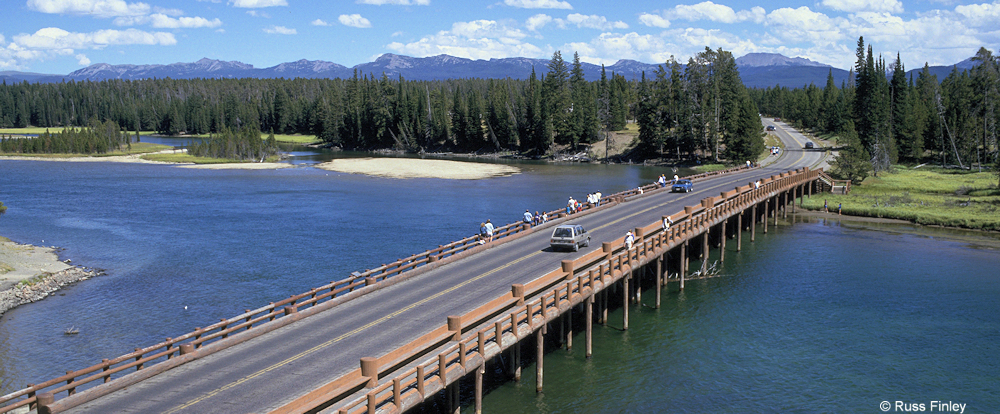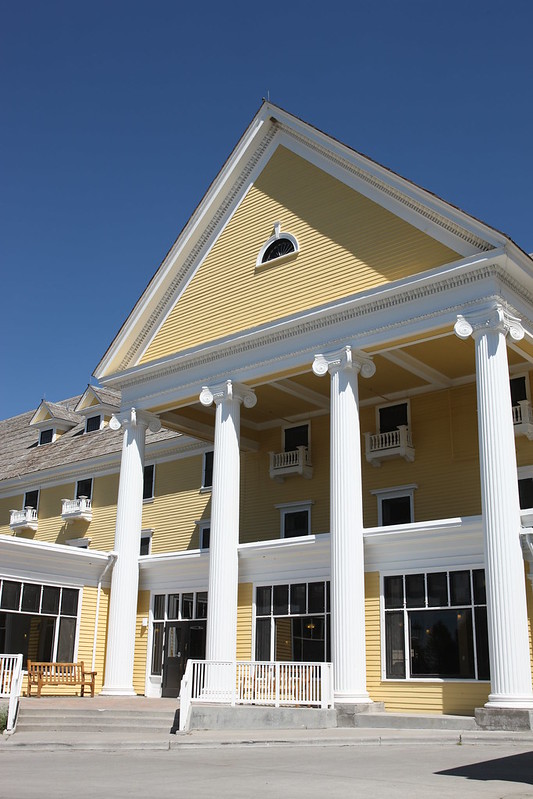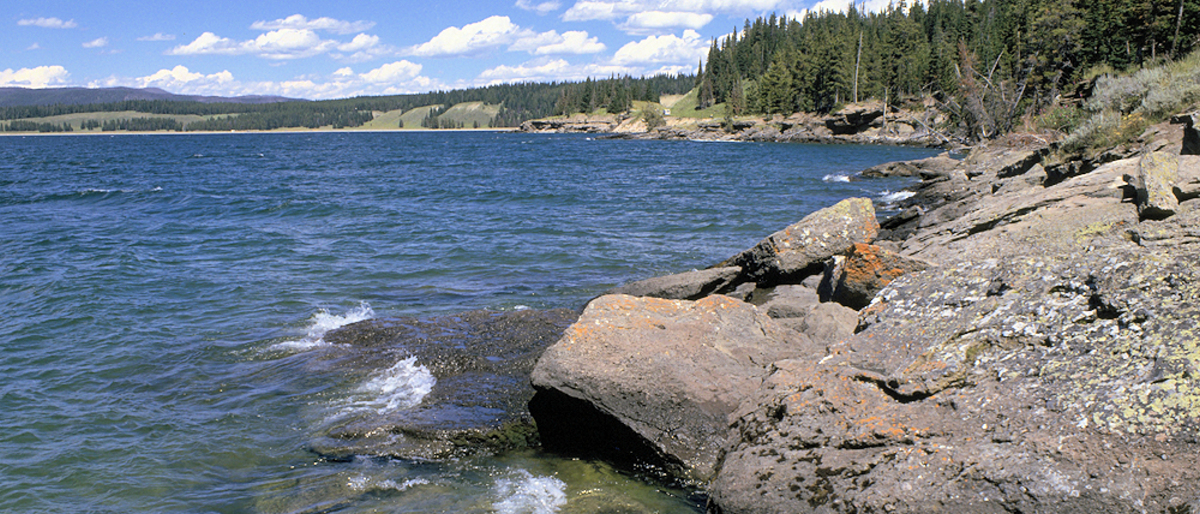5) Yellowstone Lake — This is the largest high-altitude lake in the lower 48 states, and it is breathtaking in grandeur. As you follow the long shoreline both east and north, you will see snow-capped mountains rising across the lake. On windy days, ocean-like waves break onto the shore. Be sure to visit Lake Village and walk through the Hotel. You might also want to sit on the porch of Lake Lodge and take in the view.
Fishing Bridge
The original bridge was built in 1902. It was a rough-hewn corduroy log bridge with a slightly different alignment than the current bridge. The existing bridge was built in 1937. The Fishing Bridge was historically a tremendously popular place to fish. Angling from the bridge was quite good, due to the fact that it was a major spawning area for cutthroat trout. However, because of the decline of the cutthroat population (in part, a result of this practice), the bridge was closed to fishing in 1973. Since that time, it has become a popular place to observe fish.

The Fishing Bridge Museum was completed in 1931. Built of native rock and stone, it appears to rise out of a rock outcrop. The structure was built to reflect the beauty of nature itself. Approaching from the parking lot, it was designed so that one could see through the building to Yellowstone Lake, hence the notion of focussing on the natural resource that the building was created to interpret. It would eventually become a prototype of rustic architecture in parks all over the nation and was declared a National Historic Landmark in 1987. When automobiles replaced stagecoaches as the main means of transportation through the park, people were no longer accompanied by a guide. The Museum was built as a “Trailside Museum,” allowing visitors to obtain information about Yellowstone on their own.
Lake Village
The buildings comprising historic Lake Village are figuratively, and literally in some cases, landmarks in the history of the Yellowstone story.
The Yellowstone Lake Hotel

Built on a site long known as a meeting place for Indians, trappers, and mountain men, the Lake Yellowstone Hotel was ready to serve guests in 1891. At that time, it was not particularly distinctive, resembling any other railroad hotel financed by the Northern Pacific Railroad.
In 1903, the architect of the Old Faithful Inn, Robert Reamer, masterminded the renovation of the Hotel, designing the ionic columns, extending the roof in three places, and adding the 15 false balconies, which prompted it to be known for several years as the “Lake Colonial Hotel.” A number of further changes by 1929, including the addition of the dining
room, porte-cochere (portico), and sunroom as well as the refurbishing of the interior created the gracious landmark we see today.
By the 1970s, the Hotel had fallen into serious disrepair. In 1981, the National Park Service and the park concessioner, TW Recreational Services, embarked upon a ten-year project to restore the Lake Hotel in appearance to its days of glory in the 1920s. The work was finished for the celebration of the hotel’s centennial in 1991. The Hotel was placed on the National Register of Historic Places that year.
The Lake Ranger Station

After a decade of military administration in Yellowstone, Congress created the National Park Service in 1916. Ranger stations began to replace soldier stations throughout the park. The Lake Ranger Station was completed in 1923. The first Director of the National Park Service, Steven Mather, suggested that the station should blend in with its natural and cultural environment. A local woodsman used pioneer building techniques to give the station its “trapper cabin” style. With park architects, Superintendent Horace Albright designed a large octagonal “community room” with a central stone fireplace. This rustic hall served an informational function by day, and, in the evening, it became the scene of a folksy gathering around a log fire.
The Lake Lodge
The advent of the auto in the park in 1915 created a great influx of visitors. The need arose for an intermediate style of lodging between the luxury of the Lake Hotel and the rustic accommodations of the tent camps. In 1926, the Lake Lodge (also a Robert Reamer design) was completed, one of four lodges in the park. The park was no longer primarily accessible to only affluent “dudes” or hearty “sagebrushers.” Democracy had come to Yellowstone.
Archeological Research
For compliance purposes associated with the reconstruction of the East Entrance Road, recent archeological research has been conducted by the Mid-West Archeological Center of the National Park Service. Preliminary studies indicate that indigenous people inhabited the Lake area 9,600 years before present. Numerous projectile points have been found in addition to a hearth (cooking) structure, middens, and a bison harvest site.
